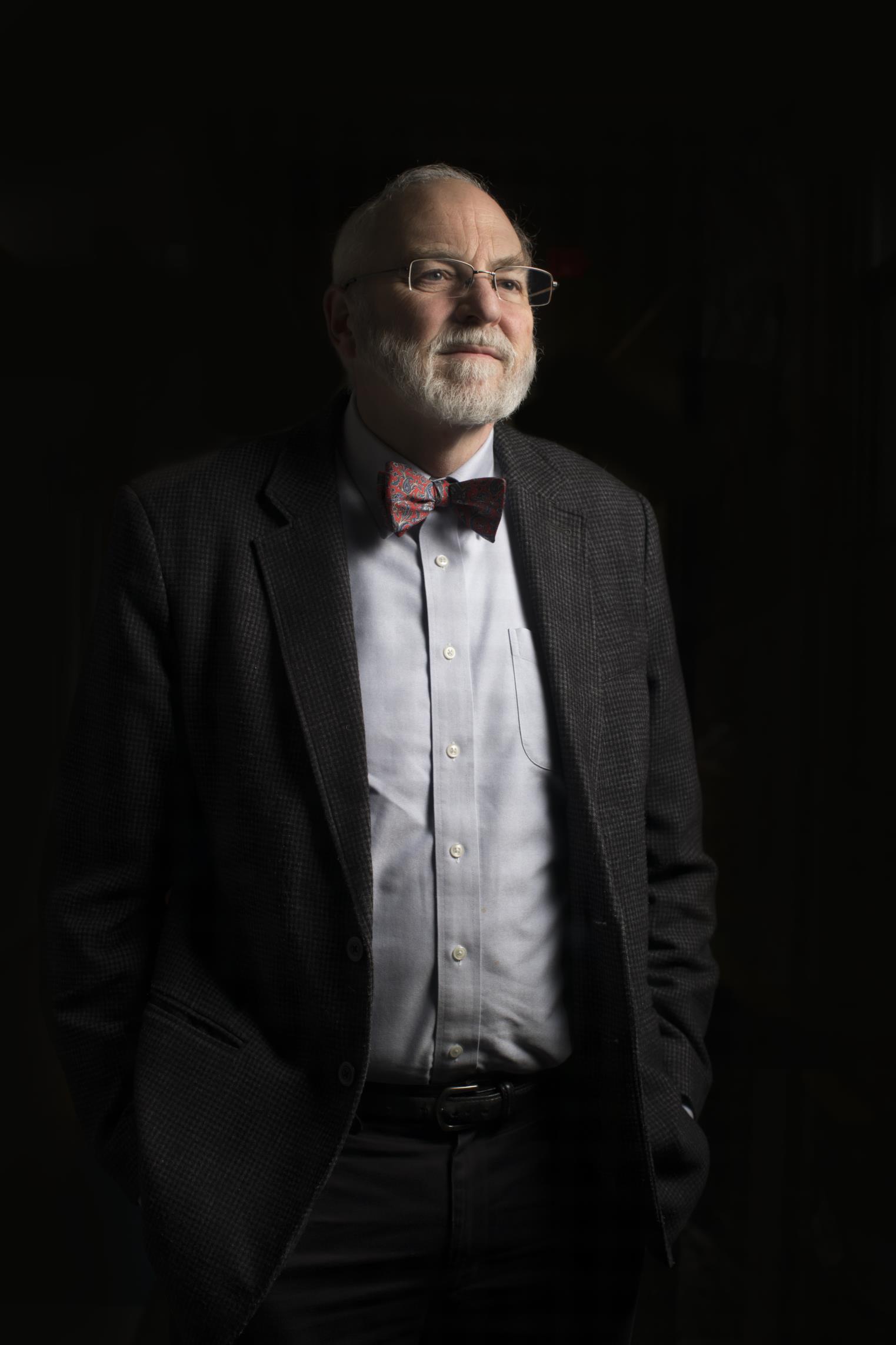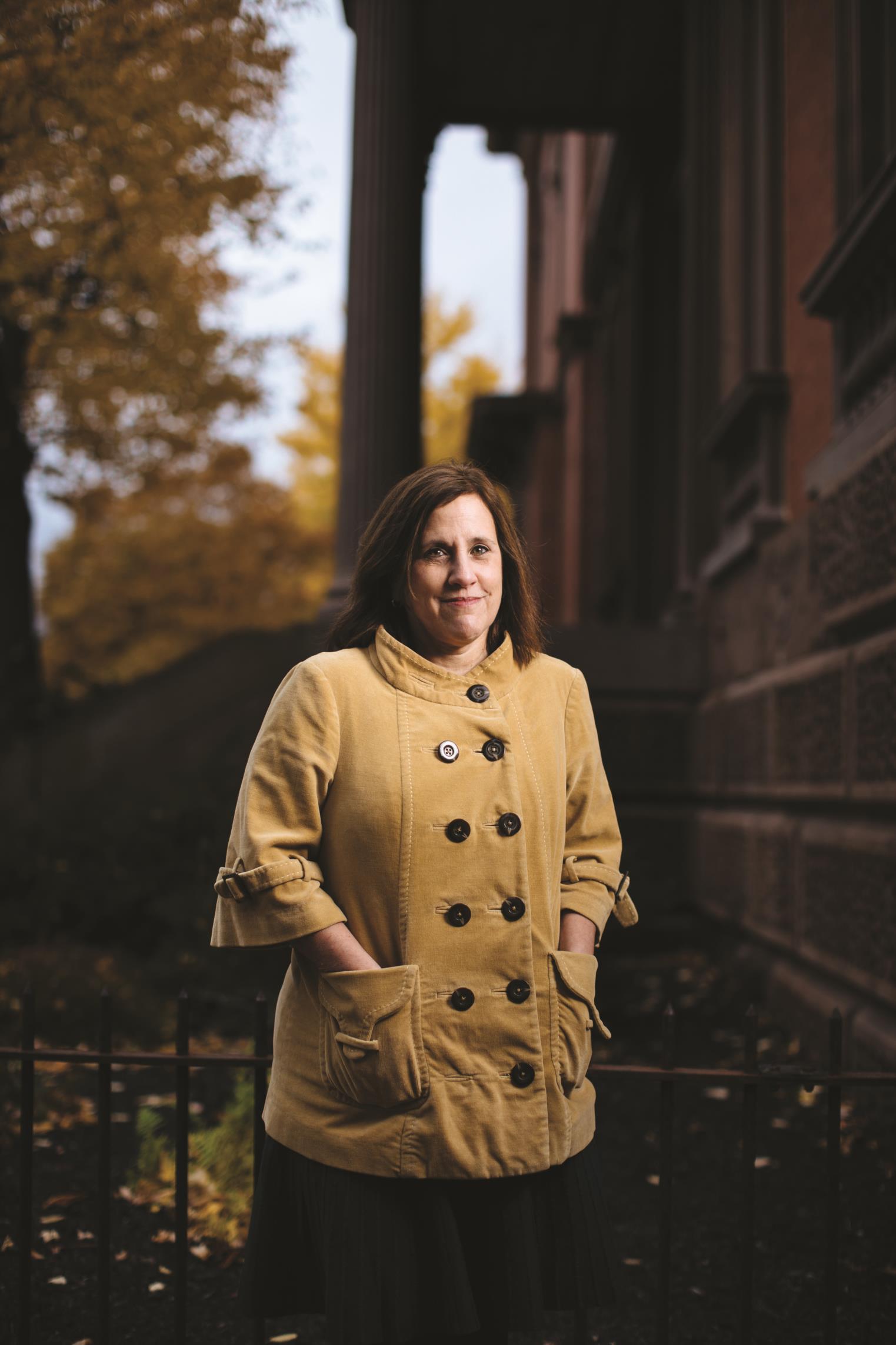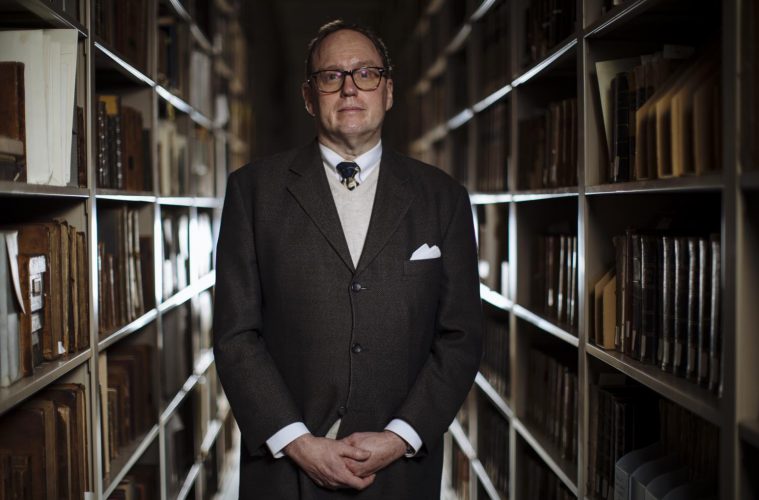 The reason for the move? PEM was in need of a facility that could house both the library’s documents and the nearly 1.8 million museum objects not on view—no short order, particularly when the matters of climate control and security were factored in. The options were to retrofit an existing building or find a footprint large enough to accommodate a new building. Neither scenario would result in a Salem location.
It is an understatement to say the collection is valued by scholars worldwide. According to Emerson Baker, interim dean of the School of Graduate Studies at Salem State University, “It is one of the finest research libraries for manuscript materials in the United States, especially for studying early Massachusetts history and maritime history—they are incomparable resources.” Baker is intimately acquainted with the collection; now 60, he recalls using it for his graduate school studies. As a scholar who specializes in 17th-century New England, he is pleased to see PEM caring for the collection to the extent it is. He does, however, miss the days when he could send his students down the street to conduct their research. “But the treatment of the collection is of the utmost importance,” he says, adding that he knows it is receiving proper care even though it has ceased to be a readily available local resource. Like many others, he would welcome its return to Salem. “It’s an important piece of local history and our community,” he says. In lieu of having easy access to the entire collection, Baker dreams of a Salem reading room that would house at least part of the collection. He would want it to be open to the public and staffed with librarians and archivists. He’d also like to see free access to the digitized materials, as well as the ability to bring materials from Rowley to Salem with advance notice.
PEM’s position is that the library collection is now being stored in the best possible conditions and that it is more accessible than ever before. “The scale of this undertaking is immense, and the rewards are myriad,” says John Childs, PEM’s chief of collection services. “Researchers will be able to access the collection in its entirety, and they will be able to draw new connections and insights from the proximity of previously disparate collection areas.”
But the 700-member Friends of Phillips Library view the move in another light. In addition to the physical distance that now separates Salem residents from the collection, they are concerned that the Rowley reading room is not accessible by public transportation, which limits its availability to local students and residents as well as visiting scholars. In December 2017, the Friends started a #SavethePhillipsLibrary campaign advocating for the library’s return to Salem. They argue that the collection must be located in Salem in order for PEM to fulfill its mission “to inspire the public by fusing art, culture, and history in innovative ways.”
The reason for the move? PEM was in need of a facility that could house both the library’s documents and the nearly 1.8 million museum objects not on view—no short order, particularly when the matters of climate control and security were factored in. The options were to retrofit an existing building or find a footprint large enough to accommodate a new building. Neither scenario would result in a Salem location.
It is an understatement to say the collection is valued by scholars worldwide. According to Emerson Baker, interim dean of the School of Graduate Studies at Salem State University, “It is one of the finest research libraries for manuscript materials in the United States, especially for studying early Massachusetts history and maritime history—they are incomparable resources.” Baker is intimately acquainted with the collection; now 60, he recalls using it for his graduate school studies. As a scholar who specializes in 17th-century New England, he is pleased to see PEM caring for the collection to the extent it is. He does, however, miss the days when he could send his students down the street to conduct their research. “But the treatment of the collection is of the utmost importance,” he says, adding that he knows it is receiving proper care even though it has ceased to be a readily available local resource. Like many others, he would welcome its return to Salem. “It’s an important piece of local history and our community,” he says. In lieu of having easy access to the entire collection, Baker dreams of a Salem reading room that would house at least part of the collection. He would want it to be open to the public and staffed with librarians and archivists. He’d also like to see free access to the digitized materials, as well as the ability to bring materials from Rowley to Salem with advance notice.
PEM’s position is that the library collection is now being stored in the best possible conditions and that it is more accessible than ever before. “The scale of this undertaking is immense, and the rewards are myriad,” says John Childs, PEM’s chief of collection services. “Researchers will be able to access the collection in its entirety, and they will be able to draw new connections and insights from the proximity of previously disparate collection areas.”
But the 700-member Friends of Phillips Library view the move in another light. In addition to the physical distance that now separates Salem residents from the collection, they are concerned that the Rowley reading room is not accessible by public transportation, which limits its availability to local students and residents as well as visiting scholars. In December 2017, the Friends started a #SavethePhillipsLibrary campaign advocating for the library’s return to Salem. They argue that the collection must be located in Salem in order for PEM to fulfill its mission “to inspire the public by fusing art, culture, and history in innovative ways.”
 Among the voices calling for the library’s return is that of Donna Seger, professor and chair of the History Department at Salem State University. “For over a hundred years, that library served as Salem’s historical society,” she says. “I’m looking out the window of my house on Chestnut Street—all of the people who built these houses have documents in the Phillips Library. They gave them to the [then] Essex Library because that is where you put Salem’s history.” Seger notes extensive subscriptions that are getting in the way of student access to the library’s holdings. She does, however, give credit to Childs for taking up the cause. “He has said some good things—like we need to digitize more and we need to take down these paywalls. I take him at his word. I know he believes in the centralization in Rowley, but I think he knows the materials haven’t been accessible enough to the public or to scholars.”
People are, however, making their way to the Rowley facility. According to Childs, in the first few months of operation, the reading room in Rowley welcomed 229 visitors and fielded 271 requests from remote researchers. “This indicates that reading room usage at the new location is entirely consistent with previous years—before the collection moved—and that the research library continues to be a vital resource for graduate students, university professors, and curious-minded individuals from around the globe.”
There is no doubt that everyone invested in the controversy has the collection’s best interests at heart, and they are finding common ground around a number of initiatives that have come out of “working group” meetings organized by Mayor Driscoll and PEM leadership. Among them are plans for a gallery in the new wing at PEM’s main campus that will enable the regular display of materials from the collection. They also intend to create a multimedia exhibit to recognize the role of Plummer Hall in Salem’s history, and to host museum educational programs and activities there. Additionally, they will make Plummer Hall accessible to the public during museum hours, and its reading room will include workstations with free online access to digital materials from the library. Plans are also in place to develop a voucher program to help with transportation to the new site.
Indeed, the collection’s care is a continually evolving situation—one that appears to be on its way to addressing the most pressing points put forth by the Friends of Phillips Library.
www.pem.org
Digitizing the Collection: A Status Update
+ To digitize the works in its collection, PEM is working with a consultant with extensive experience in digitizing research library collections, and has joined two organizations—Digital Commonwealth, a consortium of Massachusetts libraries, and Internet Archive, a national consortium of research libraries—to help inform the process. Additionally, it is in the process of acquiring equipment that will enable the digitizing of more fragile materials on-site. And finally, it is working with a subcommittee of Salem’s Preservation Partners to identify priority items for digitization.
To see parts of the collection, go to @pemlibrary on Instagram.
Among the voices calling for the library’s return is that of Donna Seger, professor and chair of the History Department at Salem State University. “For over a hundred years, that library served as Salem’s historical society,” she says. “I’m looking out the window of my house on Chestnut Street—all of the people who built these houses have documents in the Phillips Library. They gave them to the [then] Essex Library because that is where you put Salem’s history.” Seger notes extensive subscriptions that are getting in the way of student access to the library’s holdings. She does, however, give credit to Childs for taking up the cause. “He has said some good things—like we need to digitize more and we need to take down these paywalls. I take him at his word. I know he believes in the centralization in Rowley, but I think he knows the materials haven’t been accessible enough to the public or to scholars.”
People are, however, making their way to the Rowley facility. According to Childs, in the first few months of operation, the reading room in Rowley welcomed 229 visitors and fielded 271 requests from remote researchers. “This indicates that reading room usage at the new location is entirely consistent with previous years—before the collection moved—and that the research library continues to be a vital resource for graduate students, university professors, and curious-minded individuals from around the globe.”
There is no doubt that everyone invested in the controversy has the collection’s best interests at heart, and they are finding common ground around a number of initiatives that have come out of “working group” meetings organized by Mayor Driscoll and PEM leadership. Among them are plans for a gallery in the new wing at PEM’s main campus that will enable the regular display of materials from the collection. They also intend to create a multimedia exhibit to recognize the role of Plummer Hall in Salem’s history, and to host museum educational programs and activities there. Additionally, they will make Plummer Hall accessible to the public during museum hours, and its reading room will include workstations with free online access to digital materials from the library. Plans are also in place to develop a voucher program to help with transportation to the new site.
Indeed, the collection’s care is a continually evolving situation—one that appears to be on its way to addressing the most pressing points put forth by the Friends of Phillips Library.
www.pem.org
Digitizing the Collection: A Status Update
+ To digitize the works in its collection, PEM is working with a consultant with extensive experience in digitizing research library collections, and has joined two organizations—Digital Commonwealth, a consortium of Massachusetts libraries, and Internet Archive, a national consortium of research libraries—to help inform the process. Additionally, it is in the process of acquiring equipment that will enable the digitizing of more fragile materials on-site. And finally, it is working with a subcommittee of Salem’s Preservation Partners to identify priority items for digitization.
To see parts of the collection, go to @pemlibrary on Instagram.

